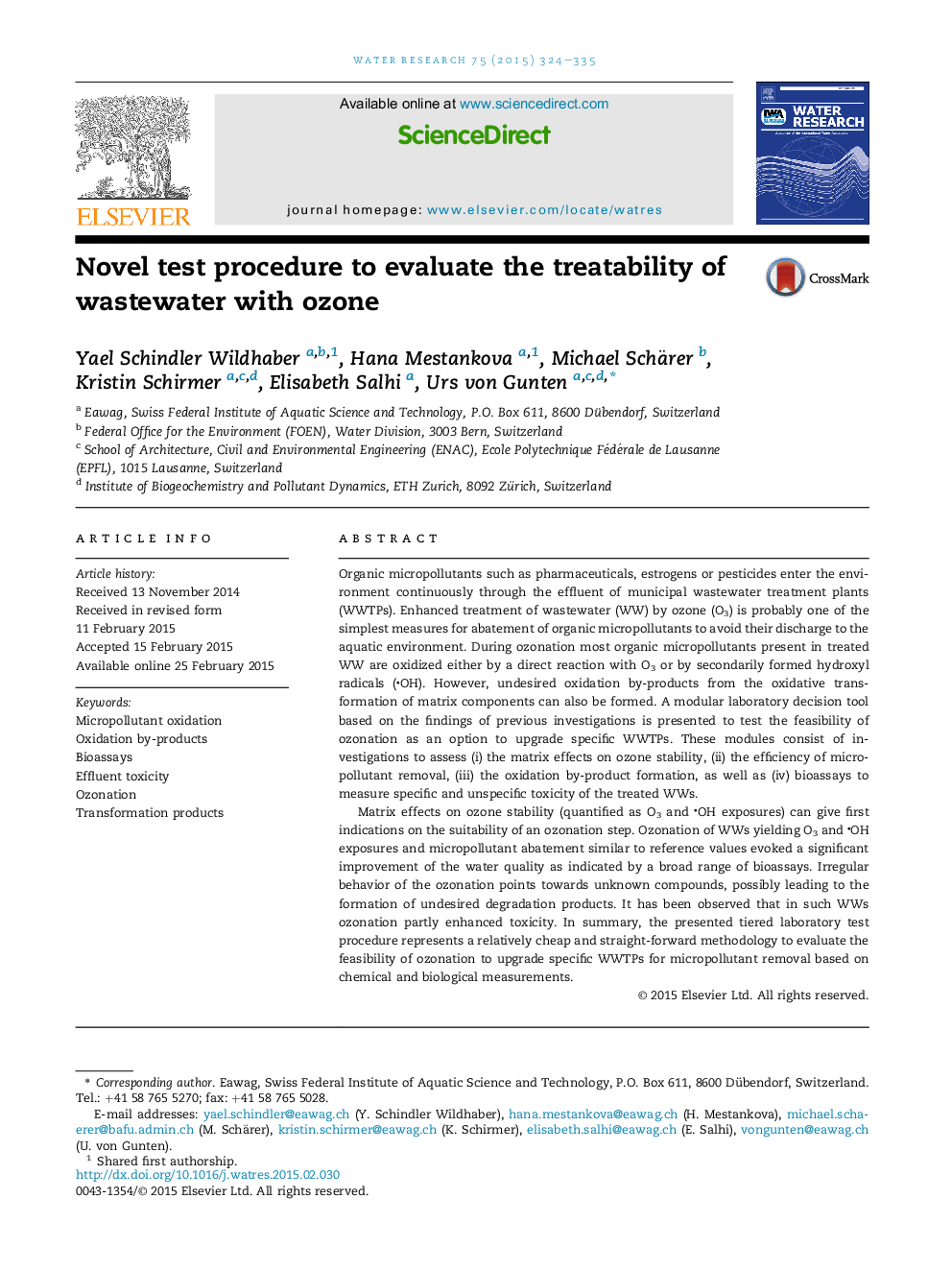| کد مقاله | کد نشریه | سال انتشار | مقاله انگلیسی | نسخه تمام متن |
|---|---|---|---|---|
| 4481219 | 1623093 | 2015 | 12 صفحه PDF | دانلود رایگان |
• A novel tiered test procedure is suitable to assess wastewater ozonation.
• O3 and OH exposures give first indications on the suitability of an ozonation step.
• Micropollutant elimination can be well predicted by the measured OH exposure.
• Bromate and NDMA formation are indicators of O3 effects on water quality.
• Selected bioassays provide information on toxicity evolution during ozonation.
Organic micropollutants such as pharmaceuticals, estrogens or pesticides enter the environment continuously through the effluent of municipal wastewater treatment plants (WWTPs). Enhanced treatment of wastewater (WW) by ozone (O3) is probably one of the simplest measures for abatement of organic micropollutants to avoid their discharge to the aquatic environment. During ozonation most organic micropollutants present in treated WW are oxidized either by a direct reaction with O3 or by secondarily formed hydroxyl radicals (OH). However, undesired oxidation by-products from the oxidative transformation of matrix components can also be formed. A modular laboratory decision tool based on the findings of previous investigations is presented to test the feasibility of ozonation as an option to upgrade specific WWTPs. These modules consist of investigations to assess (i) the matrix effects on ozone stability, (ii) the efficiency of micropollutant removal, (iii) the oxidation by-product formation, as well as (iv) bioassays to measure specific and unspecific toxicity of the treated WWs.Matrix effects on ozone stability (quantified as O3 and OH exposures) can give first indications on the suitability of an ozonation step. Ozonation of WWs yielding O3 and OH exposures and micropollutant abatement similar to reference values evoked a significant improvement of the water quality as indicated by a broad range of bioassays. Irregular behavior of the ozonation points towards unknown compounds, possibly leading to the formation of undesired degradation products. It has been observed that in such WWs ozonation partly enhanced toxicity. In summary, the presented tiered laboratory test procedure represents a relatively cheap and straight-forward methodology to evaluate the feasibility of ozonation to upgrade specific WWTPs for micropollutant removal based on chemical and biological measurements.
Journal: Water Research - Volume 75, 15 May 2015, Pages 324–335
